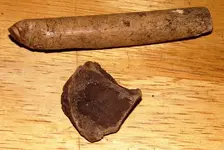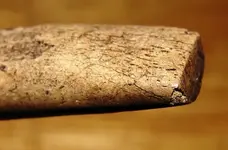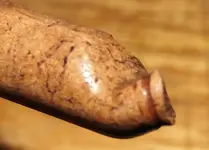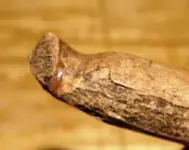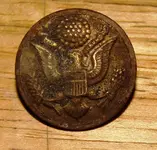An Ais Indian Treasure Mystery
Imagine, if you can, millions of dollars of gold and silver and handcrafted jewelry from Mexico randomly scattered about the east-central coast of Florida. But you don’t have to imagine it because this tale of lost treasure is one of those rare lost treasure tales that’s absolutely true.
From the mid-1500’s to the late 1700’s historical accounts tell us that hundreds of ships became stranded and lost along this hostile and dangerous stretch of cost, many of those ships loaded with Inca and Mayan gold and silver, precious stones, and other valuable cargoes. This stretch of coast was known as the Coast of Ais, or the Province of Ais, and many of these lost ships were routinely looted by these unpredictable and hostile Indians. But it’s what became of these treasures that is the main focus of this writing.
The Ais Indians were a society of towns, each town having its own chief and subordinate leaders, all of these subject to a single king who generally resided in the main capital town. So it was much like what we have in our own culture today with a city council, a mayor, and a governor that ruled over the entire province. And much like our routes of travel these individual towns were connected land trails and passages by water by which products of trade and tribute were transported throughout the entire province. And all of this is important to our understanding of just how all of that looted treasure and other merchandise became so widely scattered about in this east-central section of Florida, and beyond.
Historical documents and first hand accounts only serve to further enforce the credibility of this tale of lost treasure, just a few of those I will offer you now. (I won’t elaborate further on who these people were as they can be easily searched online.)
Hernando D’Escalante Fontaneda 1575; “The country of the kings of Aos and Jeaga is very poor. It contains neither gold nor silver mines, and to tell the truth, it is only the sea which enriches it since many vessels laden with precious metals are shipwrecked there….” And he goes on to say, “That he was only a sailor on of the shipwrecked vessels of the feet, and ignorant of the fate of the others until he had talked with the Indians who went armed to the coast of Ais and returned with very considerable riches in the form of ingots of gold, sacks of Spanish coins, and quantities of merchandise.” And also this, “I will say no more now on this subject, but proceed to speak of the wealth which the Indians found in bars of gold and Mexican jewelry belonging to the shipwrecked passengers, amounting to more than a million. The chief retained the best part of it for himself and divided the remainder among the Indians of Ais, of Jaega, of Guacata, of Mayajuaca, and of Mayaca.”
John Sparks, chronicler of Hawkin’s voyage; “and how they came of this gold and silver the Frenchman knew not as yet, but by guess, who having traveled to the southwest of the cape (Canaveral), and having found the same dangers by means of sandy banks, as we also have the same, and there finding masts which were the wrecks of Spaniard coming from Mexico, judged they had gotten treasure from there.”
Laudonniere; “…the greatest part of these riches, washed, as they said, out of Spanish ships which were commonly cast away in this straight.”
Menendez (his meeting with the head chief of Ais in 1565); “he was very much pelted in various colors and he wore on his brow a piece of gold which weighed more then five pesos and his principle Indians wore similar ornaments, the metal for which had apparently been obtained by the looting of the wrecks of Spanish treasure ships.”
The above historical observations and writings are just a few of the many accounts that continue to support this true tale of lost treasure. There exist evidences of many ships along the Ais coast, this including the ships of the 1554, 1563, 1618, 1622, 1634, and 1715 treasure fleets. In addition to the ships of these flotas, there are many other accounts of ships along the Ais coast, others with credible evidences that make them suspect, all of these together totaling perhaps as many as a hundred or more between the mid-1500’s and the late 1600’s. Johnathan Dickinson’s vessel, the Reformation, was wrecked there in 1696 along with the Mantwich and his account of his travels among the Indians up the Ais coast to St. Augustine is well documented, the Indians still hostile and actively conducting their looting operations. So roughly 150 years of this continuous shipwreck looting by these coastal Indians.
Just how much treasure was actually looted we can only guess but in just one first hand account we learn of “over a million pesos in ingots of gold, silver, sacks of coins, and Mexican jewelry” and this account only represented “a portion” of what was actually taken in that single event. But the real question for us today is, “where is all of this treasure today?”
No doubt a great deal of this treasure is buried under asphalt and concrete, the coast of Florida, including the old marshlands and mangroves, now surrounded by the swiftly progressing advances of modern man. The coastlines are also eroding and the older surfaces continuing to move deeper and deeper below the layers of a continual growth of decayed and new earth. Using archaeological summaries as a guide we can quickly discover that many of the period relevant items they have recovered are coming from depths of between two and four feet, this including silver and gold coins from the period and other items from these same precious metals that have been hammered into ornamental wears by the Indians in question. So very-very clearly these looted treasures are still out there and likely in good number, though also just as likely to be randomly scattered about a very vast area of east-central, central, and south Florida. However, from all of the documents and accounts I have research it is also likely that the vast majority of it is likely confined to the Ais controlled coastal regions of east-central.
Unlike Oak Island, where there exist no provenance that this location was anything other then an old mineral mine, this Ais Indian treasure tale has mountains of actual documentation to serve as that provenance in conforming the existence of these valuable and historical treasures. And while the effected landscapes have been greatly infringed upon by modern man’s advances, thus rendering these locations inaccessible, there still exist those locations where these ancient treasures might still be discovered, this due to the nature in which these treasures took legs and traveled and the nature in which they were hidden. Today we have the technology to go looking for these treasures, if only searching for them one piece at a time, or one small cache at a time.
There isn’t much in the existing records to indicate that any significant portion of these looted treasures were ever recovered despite the Spanish efforts to do so. The most I’ve ever come across was 100 pieces of eight that was recovered from an Ais chief near St. Luci inlet, other then this it appears that most of the Spanish recovery efforts proved fruitless in regards to the gold and silver that was looted. And as we continue to research these accounts further that appears to be very good reason as to why the Spanish had such little success.
Simply put, the Ais were never tamed and they often went to extraordinary measures to hide their plunder for a number of reasons. Most accounts talk of how these treasures were often buried in secret by their new owners to hide it from the Spanish and even their own people, one also has to consider that the Spanish simply didn’t possess the manpower to chase down all of these treasures that were being so widely distributed throughout the region. There is evidence that some trading between the Indians and the Spanish did take place, items like tobacco, knives, and mirrors being offered by the Spanish in exchange for looted items but there is no evidence that this was even remotely successful, and in fact, quite a bit of evidence exist proving just the opposite.
The Calusa:
It’s worth noting that the Caluas Indians were no different, so for those of you with access to lands in the Calusa territories you might also want to consider the possibilities. Here os just one first hand account in regards to these same treasures being looted and dispersed by the Calusa, another hostile Indian nation in southern and western coastal Florida that was likewise never tamed.
Le Moyne, 1564; While speaking of King Calos in the Martyrs (Florida Keys) after the rescue of shipwrecked survivors who had lived with these Indians; “They also reported that he possessed a great store of gold and silver, and that he kept in a certain village in pit not less than a man’s height in depth, and as large as a cask, and that if I could make my way to that place with a hundred arquebusiers (muskets) they could put all of that wealth my hands besides which I might obtain from the richer of the natives. They said further, that, when the women met for the purpsoe of dancing they were hanging at their girdles flat plates of gold as large as quoits, and in such numbers that the weight fatigued and inconvenienced them in dancing, and that the men were similarly loaded. The greater part of this wealth, they were of the opinion, came from Spanish ships of which numbers are wrecked in that strait, the rest from the trade between the king and other chiefs in the neighborhood. Calos is on the river forty or fifty miles beyond the promontory of Florida that looks toward the south.”
So while this writing is mainly focused on the Ais territories it is also worth noting that this looting of shipwrecks wasn’t isolated to just the Ais region, the Ais region just providing the vast majority of documented accounts and posing the greatest amount of looting and concern throughout the 150 year period (mid-1500’s to about 1700) in question.
Sir John Hawkins, The Hawkin’s Voyages; “It seemeth they had estimation of their gold and silver, for it is wrought flat and graven, which they wear about their necks, others some make round like a pancake, with a hole in the middle to bolster up their breast withal, because they think it a deformity to have great breast.”
To help further illustrate the vast amounts of treasure that came to these shores here is a brief list of some actual documented “Spanish” wrecks upon this coast (there are more, including more galleons). Also, keep in mind that during the period in question much of this sailing was done using landmarks which means that these were mostly “coastal voyages” and that these ships were extremely vulnerable to the notorious shallow shoals and bars and that storms easily pushed them into these shallows. There is no doubt that the Indians had access a great many of these vessels and their cargoes. (The dollar values referenced below are period references and these amounts would actually be many-many times higher today.)
1530- A book written in Spain mentions a large number of ships lost near Cape Canaveral.
1555- Several ships of the Flota de Tierra Firme (Spanish treasure fleet) were lost south of Cape Canaveral.
1556- Nueva Espana Flota (Spanish treasure fleet) was lost at the bar of Ais, it was reported that the Ais recovered over a million in pesos in bars of gold, silver and jewelry from Mexico.
1563- The galleon, La Magdalena wrecked bearing 50 tons of silver bullion, 170 chest of worked silver, 1100 pounds of gold bullion, and jewelry from Mexico, at Cape Canaveral.
1564- 2 ships lost north of Cape Canaveral.
1571- Two galleons, the San Ignacio and Santa Maria were lost south of Cape Canaveral with $2,500,000 pesos in treasure.
1572- Two Spanish Ships at Cape Canaveral.
1573- One Ship off Cape Canaveral.
Summary
There are many such documents and accounts, more then enough to substantiate the existence of these looted treasures within these referenced regions of Florida. We also have archaeological evidences of the existence of these period correct treasures within the cultural and social regions of the referenced Indians with no real effort towards the recovery of just these items, the recovery of these evidences simply being the products of happenstance of a much broader historical investigation.
Yes, the challenges are extreme and the odds are very long, also keep in mind that most of the period correct discovers have come from depths of between 2 1/2 and 4 feet, well past that range of most metal detectors unless those target signatures are rather large.
Quick Reference Materials (Can be found online.)
Memoir of Hernando D’Escalante Fontaneda, 1575
A Survey OF Indian River Archeology, Florida by Irving Rouse, 1951
More Light on the Indians of the Ays Coast, Eugene Lyon, 1967
Spanish Contacts with the Ais (Indian River) Florida, Charles D. Higgs
Derrotero of Alvaro Mexia, 1605 (Translation by Charles D. Higgs)




